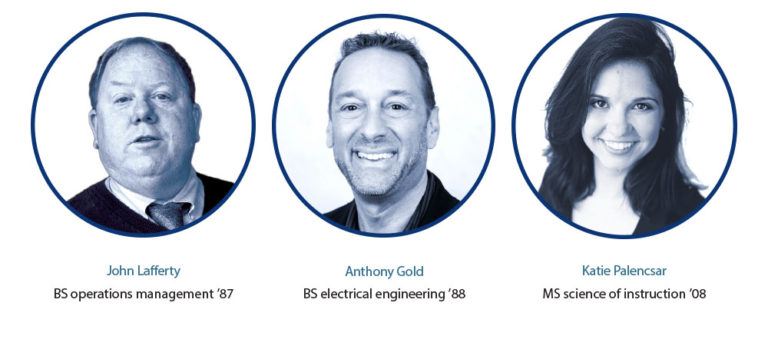

CellMyLight
John Lafferty
BS operations management ’87
A 2009 mission trip to Liberia in West Africa inspired John Lafferty to invent a product to help villagers who were struggling without electricity and who depended on cell phones to communicate. Lafferty created the CellMyLight flashlight, which used clean and abundant solar power to produce enough light to illuminate huts and charge small devices. What’s more, villagers who owned these flashlights became entrepreneurs, selling their lights’ recharging capabilities to their neighbors for a small fee. “Helping people has always been my business philosophy,” he says. “These people really touched my heart. I knew I needed to solve their lighting problem as well as find a way for them to charge their phones.” Over the years, CellMyLight has been updated with additional features, and it is now sold all over the world.
- The CellMyLight flashlight can be charged from the sun or electrical outlets.
- It has several settings: high beam light, low beam light, strobe light, SOS signal light and map light.
- It can charge a cell phone or other devices like a GPS or an iPad.
- The light includes a USB port.
- The self-contained solar panel can be recharged thousands of times and stays fully charged for up to 8 hours.
- The flashlight is waterproof, drop proof and it will continue to work, even if you break a portion of the solar panel.
- A portion of the proceeds go toward educational programs in the United States and abroad.

ROAR for Good
Anthony Gold
BS electrical engineering ’88
Anthony Gold, social entrepreneur, co-founder and COO of ROAR for Good, described the moment that opened his eyes to the safety and harassment issues that women face every day. Gold was walking in Philadelphia with his friend Yasmine Mustafa when he unknowingly witnessed a woman in a potentially dangerous situation. “Yasmine could immediately tell the woman was in an uncomfortable environment and she intervened to help,” says Gold. “It made me realize that I have little idea what women deal with on a daily basis. And I no longer wanted to be part of the problem; I wanted to be part of the solution.” Gold and Mustafa went on to create ROAR for Good, a company that develops wearable devices to help reduce assaults and empower women. Their ultimate vision is to help transform society enough to make wearable safety devices, like their Athena device, obsolete.
- The Athena wearable safety device can emit an audible 95 decibel alert and send your GPS location to emergency contacts.
- The ROAR personal safety mobile app also allows you to set a status, for example “going out for a run,” and enable your friends or loved ones to watch over you in real time and request you to check-in with them.
- Your emergency contacts can contact the 911 call center closest to your location, not theirs.
- For each device sold, the company contributes part of the proceeds to organizations that are teaching youth about empathy, respect and healthy relationships.

Artifact
Katie Palencsar
MS science of instruction ’08
As a teacher, Katie Palencsar experienced firsthand how difficult it was to find books that met the specific needs of her students. Her solution? To create the Artifact app, a place where teachers, librarians, publishers and book lovers alike can search, browse a catalog and discover content in a fast and easy way. “A teacher’s job is already difficult,” says Palencsar. “Our main goal with Artifact is to be a central resource for the education market to provide information about the content that teachers really need.” There are many features of the app, but its essential function is to organize books based on identified topics, themes, educational characteristics, literary elements and teaching standards. The company was acquired by Certica Solutions, which Palencsar says will allow it to continue to grow and better serve its users.
- The Artifact app is a Web-based searchable database of books which are categorized by tags, called artifacts, that identify the themes and literary elements within the book.
- Users use artifacts to see what’s contained in books and get faster, easier access to the ones that meet their needs.
- Artifacts can also be used to facilitate reading or discussion guides, or support pre-or-post reading activities.
- Publishers and distributors use the data and search capabilities to better serve clients like libraries and schools.


